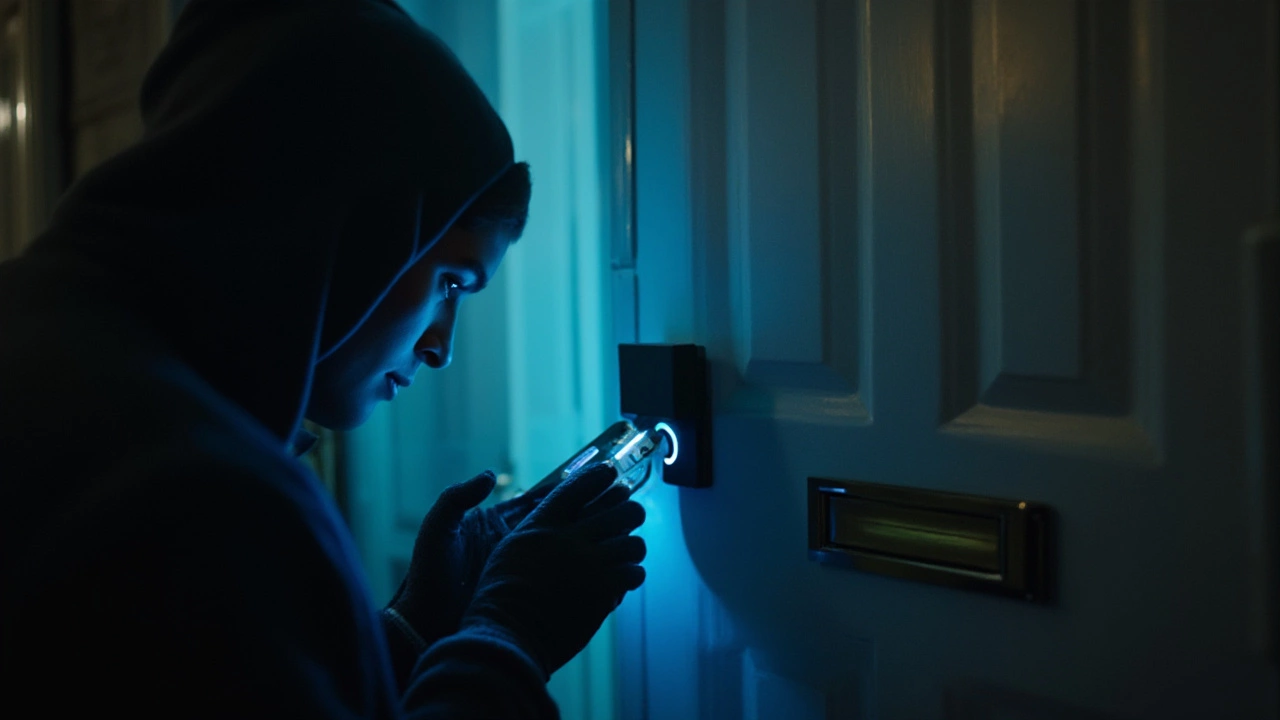If you’re thinking about a Ring Doorbell, you probably have a few questions: Do I need an electrician? Is there a monthly fee? Can thieves jam it? This guide gives straight answers and practical tips so you can decide fast and set it up right.
Ring offers several models – video doorbells, battery‑run units, and wired versions that link to your Wi‑Fi. The biggest difference is power. Wired models need a transformer, which may mean an electrician if you’re not comfortable with wiring. Battery models are easier but need regular charging or swapping.
Look at video quality too. 1080p gives clear faces, while lower resolutions can make it hard to read a license plate. Night vision matters – Ring’s built‑in infrared works well, but bright street lights can wash out the image. If you have a dark porch, consider adding a small external light that syncs with the doorbell.
Most UK users can install a Ring Doorbell themselves with a drill, a screwdriver, and the included mounting kit. The step‑by‑step video inside the Ring app walks you through measuring, drilling, and mounting. If your doorbell needs a new transformer, call an electrician – it’s safer and keeps your warranty intact.
About the subscription: Ring offers a free plan that records videos for 24‑hour rolling storage. Without a subscription, videos disappear after a day, so you’ll lose footage of any incident. The Protect plan adds 60‑day video history, motion‑activated alerts, and extended warranties. Weigh the cost against how often you check the footage.
Security‑savvy thieves sometimes try to jam or disable Ring devices. The biggest risk is Wi‑Fi theft – if someone guesses your password, they could view your live feed. Use a strong, unique Wi‑Fi password and enable two‑factor authentication in the Ring app. Keep the firmware updated; Ring pushes fixes automatically, but you must allow them.
Protect your doorbell from physical tampering by screwing the mount tightly and using a security screw head that needs a special tool. If you live in a high‑crime area, consider a protective housing that slides over the camera, making it harder to point a laser or spray paint over it.
When you’ve got the hardware set up, customize motion zones in the app. Limit the detection area to your driveway or porch, not the street, to avoid endless alerts. You can also set “people only” mode, which filters out moving cars and animals.
Finally, remember that a Ring Doorbell is only part of an overall security plan. Pair it with outdoor lights, a good lock, and, if you need extra eyes, a separate security camera that records to the cloud without a subscription.
With the right model, a solid Wi‑Fi setup, and a few simple security steps, a Ring Doorbell can give you peace of mind and a handy way to see who’s at the door – all without breaking the bank.

Curious about how long your Ring videos stick around without a subscription? Get the full breakdown of storage limits, workarounds, and what you'll actually lose.

Explore whether thieves can disable Ring doorbells, real-life hacks, vulnerabilities, and smart ways to secure your video doorbell. Stay safe with expert tips.

Curious if your Ring doorbell captures everything 24/7? This article breaks down exactly how Ring records, what triggers it, and what options you have for storage. Learn the facts about motion alerts, live view, and how to make the most of your video doorbell. We’ll touch on privacy concerns and some tips to get more from your Ring device. If you want practical advice about using Ring for your home’s security, you’re in the right place.

Navigating the legality of Ring doorbells in the UK can be tricky, especially considering privacy laws and neighbors' rights. While owning a Ring doorbell isn’t illegal, users should be cautious about where it's pointing. Catch some tips on how to stay in the clear legally and keep your neighborhood relations smooth.

Ever wonder if law enforcement can ask for footage from your Ring doorbell? This piece covers the legal landscape in the UK when it comes to police requests for video access. Learn about your rights, potential scenarios, and helpful tips to navigate these requests. Understanding this can help you make informed decisions about privacy and security at home.